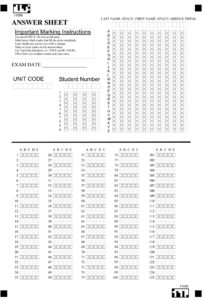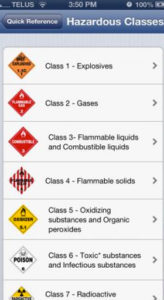Chapter 8: Pedagogical differences between media
8.5 Computing

![]()
8.5.1 A volatile and comprehensive medium
It is debatable whether computing should be considered a medium, but I am using the term broadly, and not in the technical sense of writing code. I prefer ‘computing’ to ‘ICTs’ (information and communications technologies). Computing is a medium while ICT refers more to the technologies used. The Internet in particular is an all-embracing medium that accommodates text, audio, video and computing, as well as providing other elements such as distributed communication and access to educational opportunities. Computing is also still an area that is fast developing, with new products and services emerging all the time. Indeed, I will treat recent developments in social media and some emerging technologies separately from computing, although technically they are sub-categories of computing. Once again, though, social media and some emerging technologies contain affordances that are not so prevalent in more conventional computing-based learning environments.
In such a volatile medium, it would be foolish to be dogmatic about unique media characteristics, but once again, the purpose of this chapter is not to provide a definitive analysis, but a way of thinking about technology that will facilitate an instructor’s choice and use of technology. The focus is: what are the pedagogical affordances of computing that are different from those of other media (other than the important fact that it can embrace all the other media characteristics)?
Although there has been a great deal of research into computers in education, there has been less focus on the specifics of its pedagogical media characteristics, although a great deal of interesting research and development has taken place and continues in human-machine interaction and to a lesser extent in artificial intelligence. Thus I am relying more on analysis and experience than research on the unique affordances or characteristics of computing as an educational medium in this section.
8.5.2 Presentational features
![]()

![]()
Presentation is not really where the educational strength of computing lies. It can represent text and audio reasonably well, and video less well, because of the limited size of the screen (and video often has to share screen space with text), and the bandwidth/pixels/download time required. Screen size can be a real presentational limitation with smaller, mobile devices, although tablets such as the iPad are a major advance in screen quality.
However, unlike the other media, computing enables the end user to interact directly with the medium, to the extent that the end user (in education, the student) can add to, change or interact with the content, at least to a certain extent. Also, more controversially, computing can automatically collect end-user responses for analytics. In this sense, computing comes closer to a complete, if virtual, learning environment.
Thus in presentational terms computing can be used to:
- create and present original teaching content in a rich and varied way (using a combination of text, audio, video and webinars);
- enable access to other sources of secondary ‘rich’ content through the Internet;
- enable students to communicate both synchronously and asynchronously with the instructor and other students;
- structure and manage content through the use of web sites, learning management systems, video servers, and other similar technologies;
- create virtual worlds or virtual environments/contexts through technology such as animations, simulations, augmented or virtual reality, and serious games;
- set multiple-choice tests, automatically mark such tests, and provide immediate feedback to learners;
- enable learners digitally to submit written (essay-type), or multimedia (project-based) assignments through the use of e-portfolios.
8.5.3 Skills development
Skills development in a computing environment will once again depend very much on the epistemological approach to teaching. Computing can be used to focus on comprehension and understanding, through a behaviourist approach to computer-based learning (present/test/feedback). However, the communications element of computing also enables more constructivist approaches, through online student discussion and student-created multimedia work.
Thus computing can be used (uniquely) to:
- develop and test student comprehension of content through computer-based learning/testing;
- develop computer coding and other computer-based skills;
- develop decision-making skills through the use of digitally-based simulations and/or virtual worlds;
- develop skills of reasoning, evidence-based argument, and collaboration through instructor-moderated online discussion forums;
- enable students to create their own artefacts/online multimedia work through the use of e-portfolios, thus improving their digital communication skills as well as assessing better what they have learned;
- develop skills of experimental design, through the use of simulations, virtual laboratory equipment and remote labs;
- develop skills of knowledge management and problem-solving, by requiring students to find, analyse, evaluate and apply content, accessed through the Internet, to real world problems;
- develop spoken and written language skills through both presentation of language and through communication with other students and/or native language speakers via the Internet
- collect data on end-user/student interactions with computer and associated equipment such as mobile phones and tablets for:
- learning analytics, which can be used to identify weaknesses in the design of the teaching, and student success and failure regarding learning outcomes, including skills development, as well as identifying at-risk students,
- adaptive learning, offering learners alternative routes through learning materials, providing an element of personalisation,
- assessment (including monitoring),
- automated or human feedback.
These affordances are in addition to the affordances that other media can support within a broader computing environment.
8.5.4 Strengths and weaknesses of computing as a teaching medium
Many teachers and instructors avoid the use of computing because they fear it may be used to replace them, or because they believe it results in a very mechanical approach to teaching and learning. This is not helped by misinformed computer scientists, politicians and industry leaders who argue that computers can replace or reduce the need for humans in teaching. Both viewpoints show a misunderstanding of both the sophistication and complexity of teaching and learning, and the flexibility and advantages that computing can bring to teaching.
So here are some of the advantages of computing as a teaching medium:
- it is a very powerful teaching medium in terms of its unique pedagogical characteristics, in that it can combine the pedagogical characteristics of text, audio, video and computing in an integrated manner;
- its unique pedagogical characteristics are useful for teaching many of the skills learners need in a digital age;
- computing can enable learners to have more power and choice in accessing and creating their own learning and learning contexts;
- computing can enable learners to interact directly with learning materials and receive immediate feedback, thus, when well designed, increasing the speed and depth of their learning;
- computing can enable anyone with Internet access and a computing device to study or learn at any time or place;
- computing can enable regular and frequent communication between student, instructors and other students;
- computing is flexible enough to be used to support a wide range of teaching philosophies and approaches;
- computing can help with some of the ‘grunt’ work in assessment and tracking of student performance, freeing up an instructor to focus on the more complex forms of assessment and interaction with students.
On the other hand, the disadvantages of computing are:
- many teachers and instructors often have no training in or awareness of the strengths and weaknesses of computing as a teaching medium;
- computing is too often oversold as a panacea for education; it is a powerful teaching medium, but it needs to be managed and controlled by educators;
- the traditional user interface for computing, such as pull-down menus, cursor screen navigation, touch control, and an algorithmic-based filing or storage system, while all very functional, are not intuitive and can be quite restricting from an educational point of view. Voice recognition and search interfaces such as Siri and Alexa are an advance, and have potential for education, but at present they have not been used extensively as educational tools (at least by instructors);
- there is a tendency for computer scientists and engineers to adopt behaviourist approaches to the use of computing for education, which not only alienates constructivist-oriented teachers and learners, but also underestimates or underuses the true power of computing for teaching and learning;
- despite computing’s power as a teaching medium, there are many aspects of teaching and learning that require direct interaction between a student and teacher – and between students – even or especially in a fully online environment (see Chapter 4, Section 4) . The importance of face-to-face, human-to-human contact is probably greater the younger or the less mature the learner, but there will still be many learning contexts where face-to-face contact is necessary or highly desirable even for older or mature learners (this is discussed more in Chapter 10, Section 4). The importance of frequent face-to-face teacher-student interaction is also probably less than many instructors believe, but more than many advocates of computer learning understand. It is not either/or, but finding the right balance in the right context.
- computing needs the input and management of teachers and educators, and to some extent learners, to determine the conditions under which computing can best operate as a teaching medium; and teachers need to be in control of the decisions on when and how to use computing for teaching and learning;
- to use computing well, teachers need to work closely with other specialists, such as instructional designers and computer scientists.
The issue around the value of computing as a medium for teaching is less about its pedagogical value and more about control. Because of the complexity of teaching and learning, it is essential that the use of computing for teaching and learning is controlled and managed by educators. As long as teachers and instructors have control, and have the necessary knowledge and training about the pedagogical advantages and limitations of computing, then computing is an essential medium for teaching in a digital age.
8.5.5 Assessment
There is a tendency to focus assessment in computing on multiple choice questions and ‘correct’ answers. Although this form of assessment has its value in assessing comprehension and for testing a limited range of mechanical procedures, computing also supports a wider range of assessment techniques, from learner-created blogs and wikis to e-portfolios. These more flexible forms of computer-based assessment are more in alignment with measuring the knowledge and skills that many learners will need in a digital age.
Activity 8.5 Identifying the unique pedagogical characteristics of computing
1. Take one of the courses you are teaching. What key presentational aspects of computing could be important for this course?
2. Look at the skills listed in Section 1.2 of this book. Which of these skills would best be developed through the use of computing rather than other media? How would you do this using computer-based teaching?
3. Under what conditions would it be more appropriate in any of your courses for students to be assessed by asking them to create their own multimedia project portfolios rather than through a written exam? What assessment conditions would be necessary to ensure the authenticity of a student’s work? Would this form of assessment be extra work for you?
4. What are the main barriers to your using computing more in your teaching? Philosophical? Practical? Lack of training or confidence in technology use? Or lack of institutional support? What could be done to remove some of these barriers?
For feedback on some of these questions, click on the podcast below:

